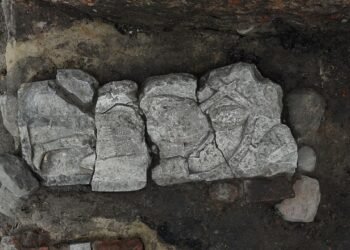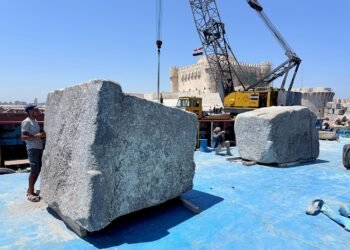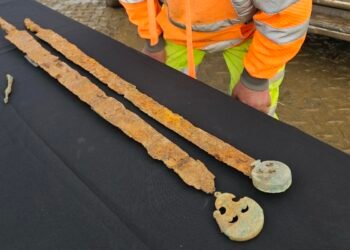Archaeologists in China have unearthed a rare “six-sheep” carriage and a four-wheeled wooden chariot with an ornate rectangular umbrella, near the mausoleum of China’s first Emperor, Qin Shi Huang, dating back to the Qin Dynasty (221 BCE-206 BCE).

The unique “six-sheep” carriage holds historical significance, as it aligns with records describing Emperor Sima Yan, founder of the Western Jin Dynasty (265-316), who utilized a sheep-drawn carriage for nocturnal palace tours, choosing the palace where the sheep halted as his sleeping quarters.
Jiang Wenxiao, project leader of the Tombs to the West of the Mausoleum of Qin Shi Huang Archaeological excavation project stated, “The discovery of a ‘sheep carriage’ is exceptionally rare in Chinese archaeology.”
The sheep in the burial pit were arranged systematically, indicating their role in a burial ritual. While the primary body of the chariot had deteriorated, remnants of implements used for carriage transport were discovered on the sheep bones, providing evidence of the sheep-drawn carriage’s existence. Historical records indicate Emperor Sima Yan’s use of a sheep-drawn carriage, but this discovery predates any previous mention of a “six-sheep” carriage, making it a breakthrough in Chinese archaeology.

The excavation also revealed a separate well-preserved wooden chariot, the oldest of its kind, accompanied by an ornate wooden umbrella. These findings contribute invaluable primary source material for the study of ancient Chinese burial practices. Surrounding pits contained various chariots and horse remains, shedding new light on the purposes and operations of single and double-axle chariots during the Qin Dynasty.
The tomb’s burial chamber is currently undergoing laboratory analysis, aiming to confirm the identity of its occupant. Notably, this tomb does not belong to Emperor Qin Shi Huang, who remains associated with the larger mausoleum, an immense structure 70 times the size of the Forbidden City. Qin Shi Huang, the first leader to unify China, established the Qin Dynasty and is renowned for the Terracotta Army discovered in the 1970s.
The latest discovery builds on previous remarkable artifacts found at this site, such as an ancient silver camel figurine in 2020, suggesting early trade connections between China and West Asia during the Qin Dynasty. While the exact burial chambers of Qin Shi Huang remain undiscovered, ongoing efforts, including cosmic-ray investigations, aim to reveal the secrets of this colossal mausoleum.
This find, presented at the 4th Congress of Chinese Archaeology, marks a significant contribution to understanding ancient Chinese burial customs and chariot usage during the Qin Dynasty. Over 800 archaeologists from around the world attended this three-day event.
























